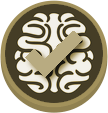Aja-Fernandez, S., Estepar, R. S., Alberola-Lopez, C. & Westin, C. F. Image quality assessment based on local variance. Conf Proc IEEE Eng Med Biol Soc 1, 4815-4818, doi:10.1109/iembs.2006.2592516 (2006).
Christodoulou, A. G. et al. A quality control method for detecting and suppressing uncorrected residual motion in fMRI studies. Magn Reson Imaging 31, 707-717, doi:10.1016/j.mri.2012.11.007 (2013).
Gedamu, E. L., Collins, D. L., & Arnold, D. L. Automated quality control of brain MR images. J Magn Reson Imaging 28, 308-319, doi:10.1002/jmri.21434 (2008).
Geissler, A. et al. Contrast-to-noise ratio (CNR) as a quality parameter in fMRI. J Magn Reson Imaging 25, 1263-1270, doi:10.1002/jmri.20935 (2007).
Hasan, K. M. A framework for quality control and parameter optimization in diffusion tensor imaging: theoretical analysis and validation. Magn Reson Imaging 25, 1196-1202, doi:10.1016/j.mri.2007.02.011 (2007).
Ilhalainen, T. M. et al. MRI quality assurance using the ACR phantom in a multi-unit imaging center. Acta Oncol 50, 966-972, doi:10.3109/0284186x.2011.582515 (2011).
Liu, Z. et al. Quality Control of Diffusion Weighted Imagins. Proc Soc Photo Opt Instrum Eng 7628, doi:10.1117/12.844748 (2010).
Menze, B. H., Kelm, B. M., Weber, M. A., Bachert, P. & Hamprecht, F. A. Mimicking the human expert: pattern recognition for an automated assessment of data quality in MR spectroscopic images. Magn Reson Med 59, 1457-1466, doi:10.1002/mrm.21519 (2008).
Mortament, B. et al. Automatics quality assessment in structural brain magnetic resonance imaging. Magn Reson Med 62, 365-372, doi:10.1002/mrm.21992 (2009).
Oguz, I. et al. DTIPrep: quality control of diffusion-weighted images. Front Neuroinform 8, 4, doi:10.3389/fninf.2014.00004 (2014)
Verde, A. R. et al. UNC-Utah NA-MIC framework for DTI fiber tract analysis. Front Neuroinform 7, 51, doi:10.3389/fninf.2014.00004 (2014)
Yoshimaru, E., Totenhagen, J., Alexander, G. E. & Trouard, T. P. Design, manufacture and analysis of customized phantoms for enhanced quality control in small animal MRI systems. Magn Reson Med, doi:10.1002/mrm.24678 (2013).
Kim, H., et al., The LONI QC System: A Semi-Automated, Web-Based and Freely-Available Environment for the Comprehensive Quality Control of Neuroimaging Data. Front Neuroinform, 2019. 13: p. 60.



